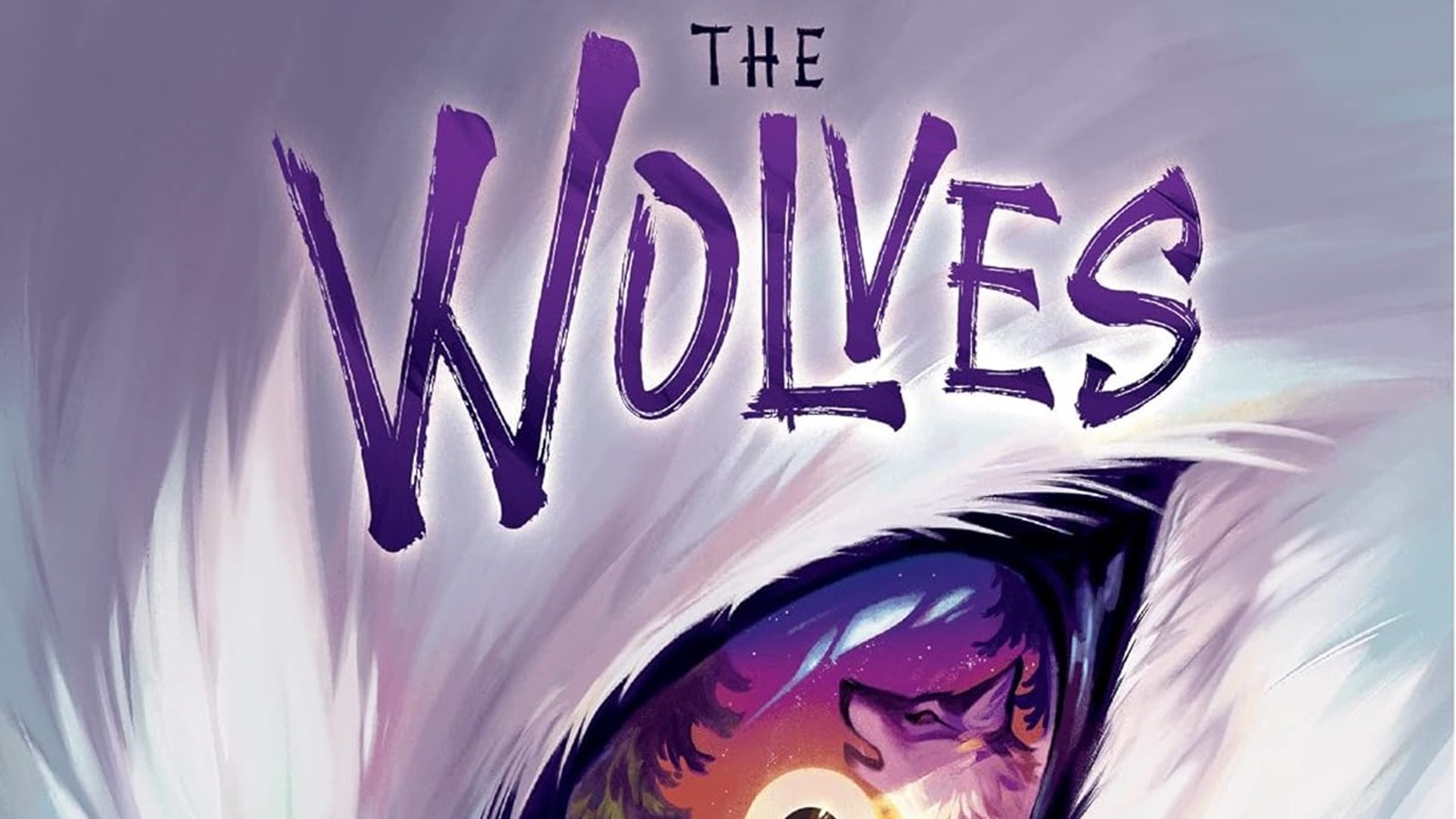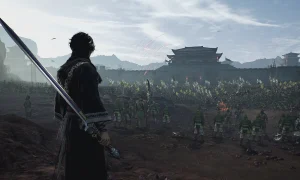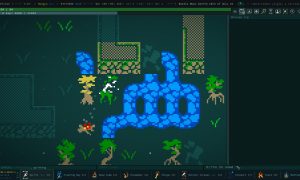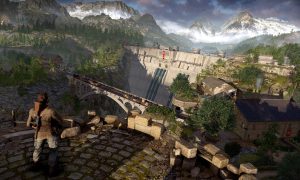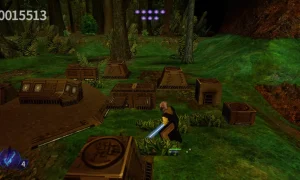This game is kind of hard to describe. It’s one of those games that ends up being more than the sum of its parts. The name tells you there’s wolves, but not a lot else. In this game you are managing your wolf pack by moving them around the board, hunting prey, building dens, and even converting other wolves to your pack all with the goal of having the most points at the end of the game. This is all pretty standard for games, but The Wolves has a unique action system I haven’t seen before so let’s sniff around to see what we can dig up.
Overview
In The Wolves, you are managing your own pack over three scoring phases: a crescent moon, quarter moon, and full moon. You’ll set the board up based on your player count and each player will start with four wolves (one alpha and one pack wolf) on each side of the central chasm. Each player takes two actions per turn with the actions being the following: move wolves, build a den, upgrade a den into a lair, howl, and dominate. The game uses five different terrain tiles (rock, grass, desert, tundra, and forest) that limit the actions a player can take. Each wolf pack has an advantage in one of these terrain types and has a sixth terrain tile that is always that terrain.

The Wolves main board
Let’s go through the actions and see exactly how the tile system works. When you want to move, you flip one of your terrain tiles and all of the wolves you move must end their movement on that terrain type. Since you start off only being able to move two wolves up to three spaces you’ll have to plot your movements to get where you’re trying to go. This rule applies to all the actions, in order to do something the target space must be of the tile(s) you are flipping. When you build a den you have to flip two identical terrain tiles that are on or adjacent to one of your alpha wolves. When you build a den you get to upgrade a wolf pack attribute choosing to increase how many wolves you can move, their speed, or howl range. Also for two identically flipped tiles, you can upgrade a den into a lair which nets you points, contributes more to the area control and a lair cannot be stolen by another player while a den can. Additionally, lairs can only be upgraded to if your den is next to a water source. Scattered around the board are lone wolf tokens and for two identically flipped tiles you can convert one of them to your pack as long as they are within howl range of one of your alpha wolves. Lastly, there’s the dominate action where for three identically flipped tiles you can steal one of another player’s pack wolf or den within howl range of one of your alphas as long as that piece is alone.
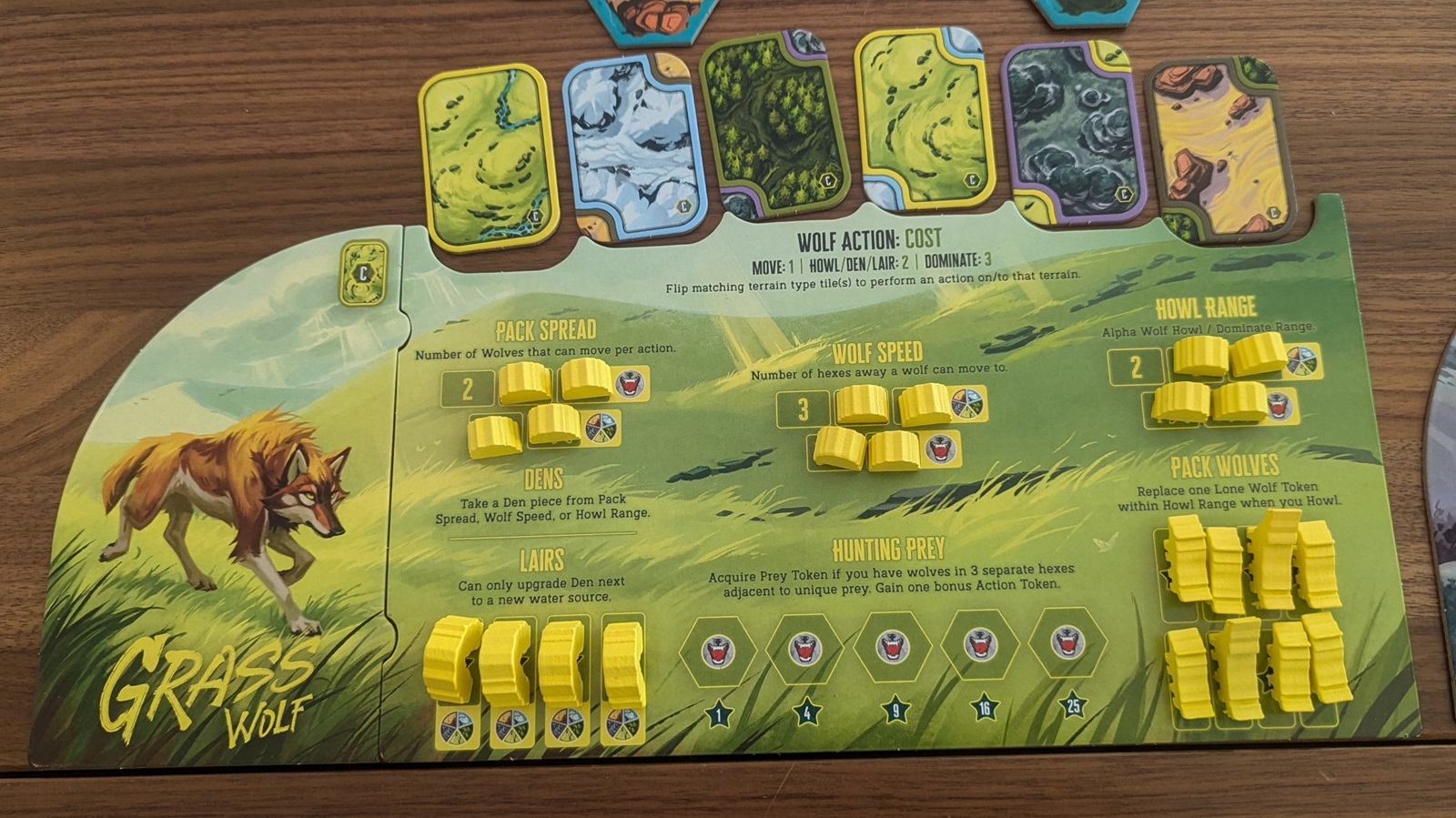
Player board setup at the start of the game
Any time a piece is removed from the main board (lone wolf token, a den, or a pack wolf) they are added to the calendar board which is what advances the game’s scoring. Different areas of the board are worth points when their scoring phase comes up with the crescent moon being 4 points, half moon being 6 points, and full moon being 8 points. This means you want your wolves in an area when it will be scored causing a fight for area majority in different parts of the board as the game progresses.
There’s other ways to score points too. In each area there’s a stack of two identical prey tokens (rabbit, deer, mouse, etc) and if you end an action with three of your wolf pieces adjacent to it in separate spaces you get to take that token. These tokens are worth a lot of points, but you can only have one of each token forcing your pack to move on to other hunting grounds. As you take pieces off of your player board you’ll receive either extra action tokens or wild terrain tokens to help you along in your journey. Any time a game piece is taken off of the main board, it is placed onto the next calendar space. When the last space of the calendar has been filled the current player finishes their turn and the games moves to final scoring where you count up your points and see who won.
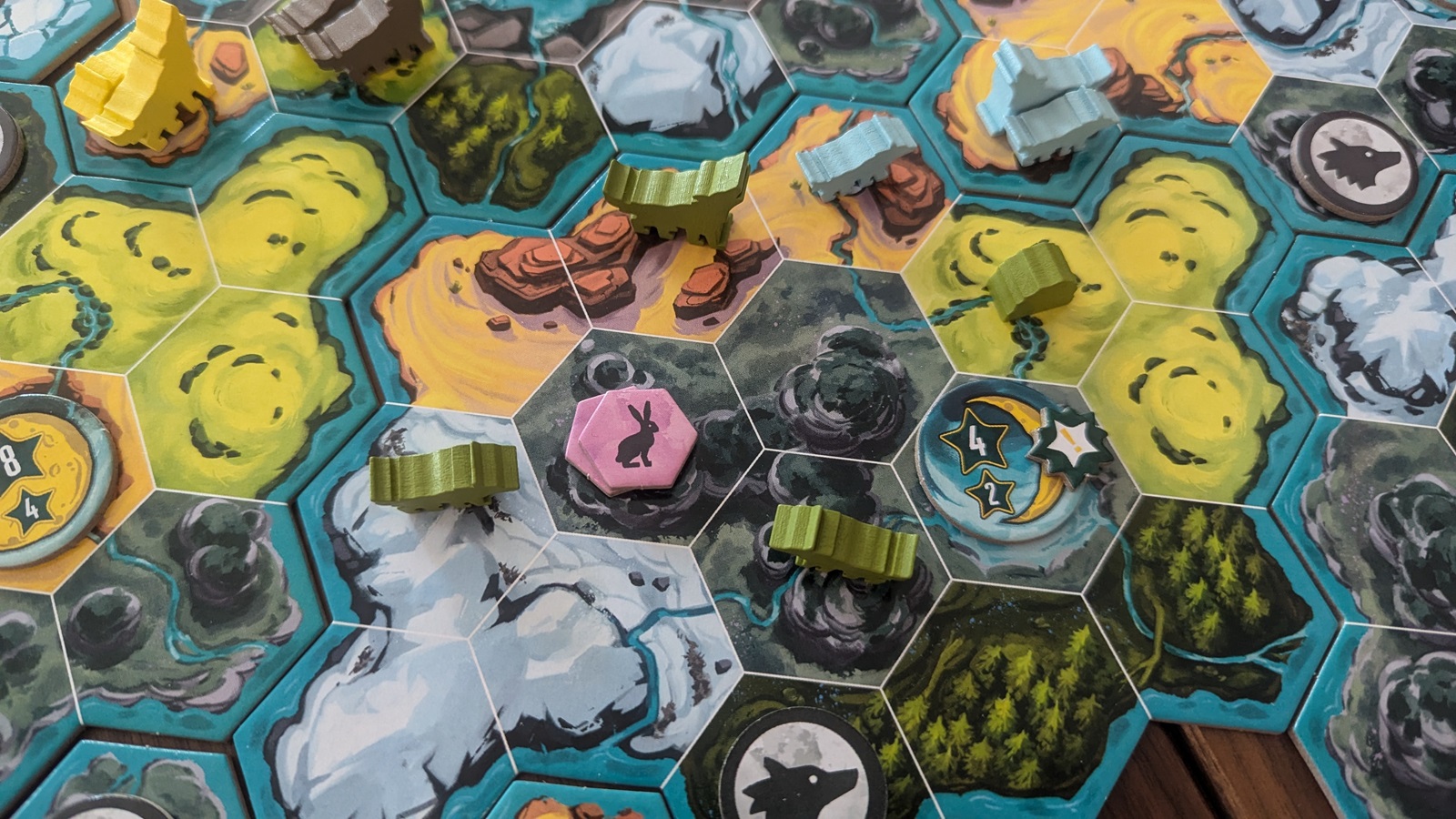
The forest wolves completing a hunt for rabbit
Pros
One great thing about the game is that the core of its rules are very simple. You take two actions on your turn by flipping identical tiles. Like any game it takes a bit to understand how the systems work together, but as long as you’re flipping the terrain tile you want to target (and meeting any other requirements) you should be ok to take that action.
This is where the game feels like it’s more than just its rules. While this isn’t the deepest game, there’s a fair amount to consider as you play. Are you going to chase scoring the areas? Or go hunting for your points? Try to focus on upgrades or keep your pack lean making the most of your limited actions? The more I played The Wolves the more I realized that’s what the game actually is. You’re trying to make the most out of your two (usually) actions each turn. Careful planning will usually be rewarded, though like always, other players can muck that up. For players who love efficiency puzzles, you might like these puppies.
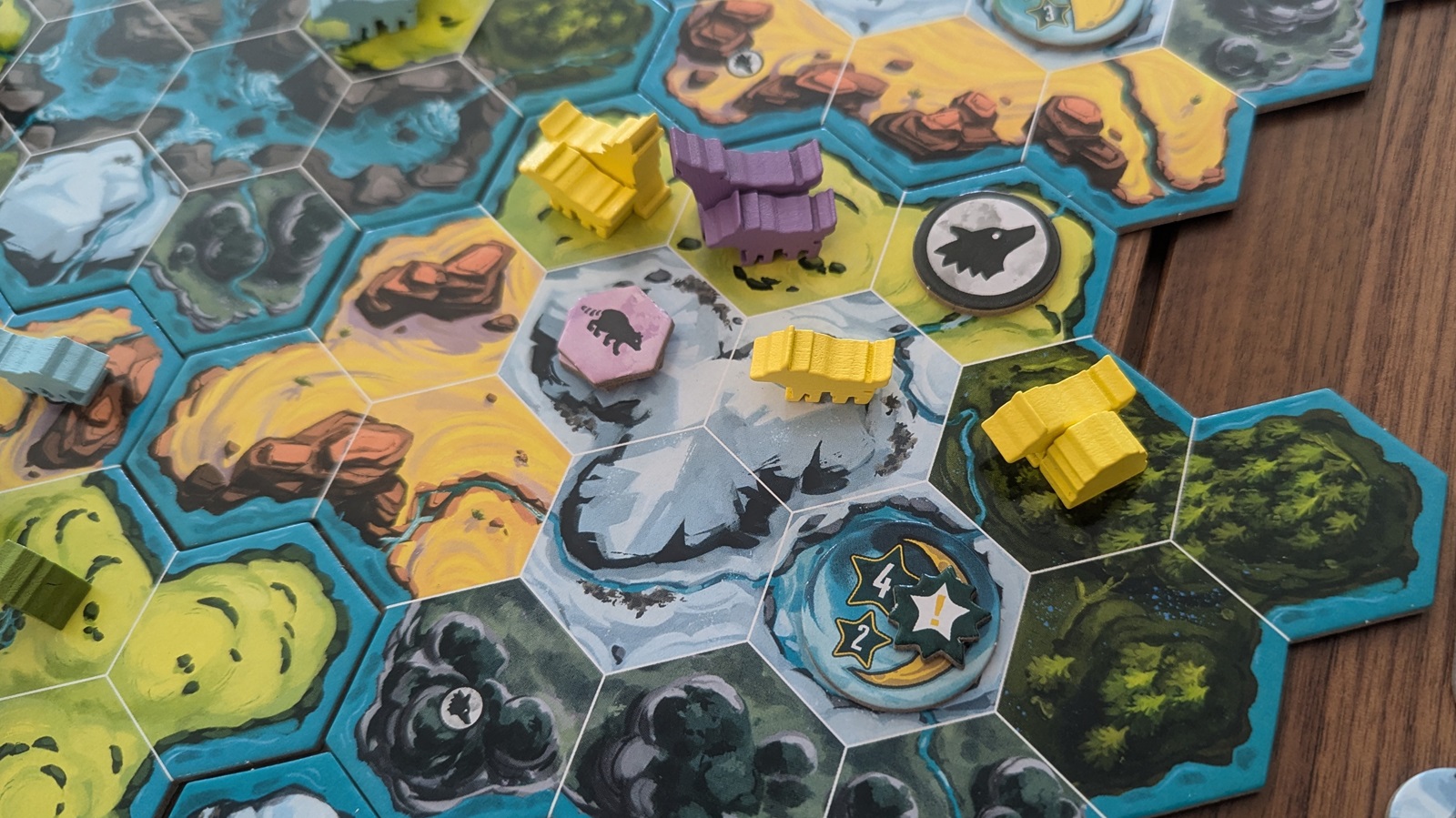
The lone grass wolf is vulnerable to conversion if the rock wolf player is able to flip three tundra tiles.
There’s also just a bit of cleverness throughout the game. Like the way your pieces are protected from conversion if you have two pieces together (max of two pieces per space.) If your wolves stick together they won’t be lured away by the siren song of a different alpha wolf, but it’s hard to hunt if everyone is together. If you leave a wolf to guard the den it also can’t be stolen, but then that wolf isn’t doing anything else. The board isn’t static as players move their packs around chasing points and prey. Particularly opportunistic players could be gobbling up the unguarded dens of other packs. It is nice to see that the players are part of the puzzle. Overall, The Wolves offer good choices for players to ponder with each game being different.
I admire the artwork for the game. It has a bit of a cartoonish appeal that I just find…nice? I will say that neither the name nor the artwork convey what the game is mechanically, but the artwork sets a tone that fits the experience. I also found The Wolve’s rulebook to be one of the better ones I’ve come across. I appreciate the numerous pictures and examples that help clarify a lot of the smaller rules. Lastly, who doesn’t love little wolf meeples to stalk around the board.
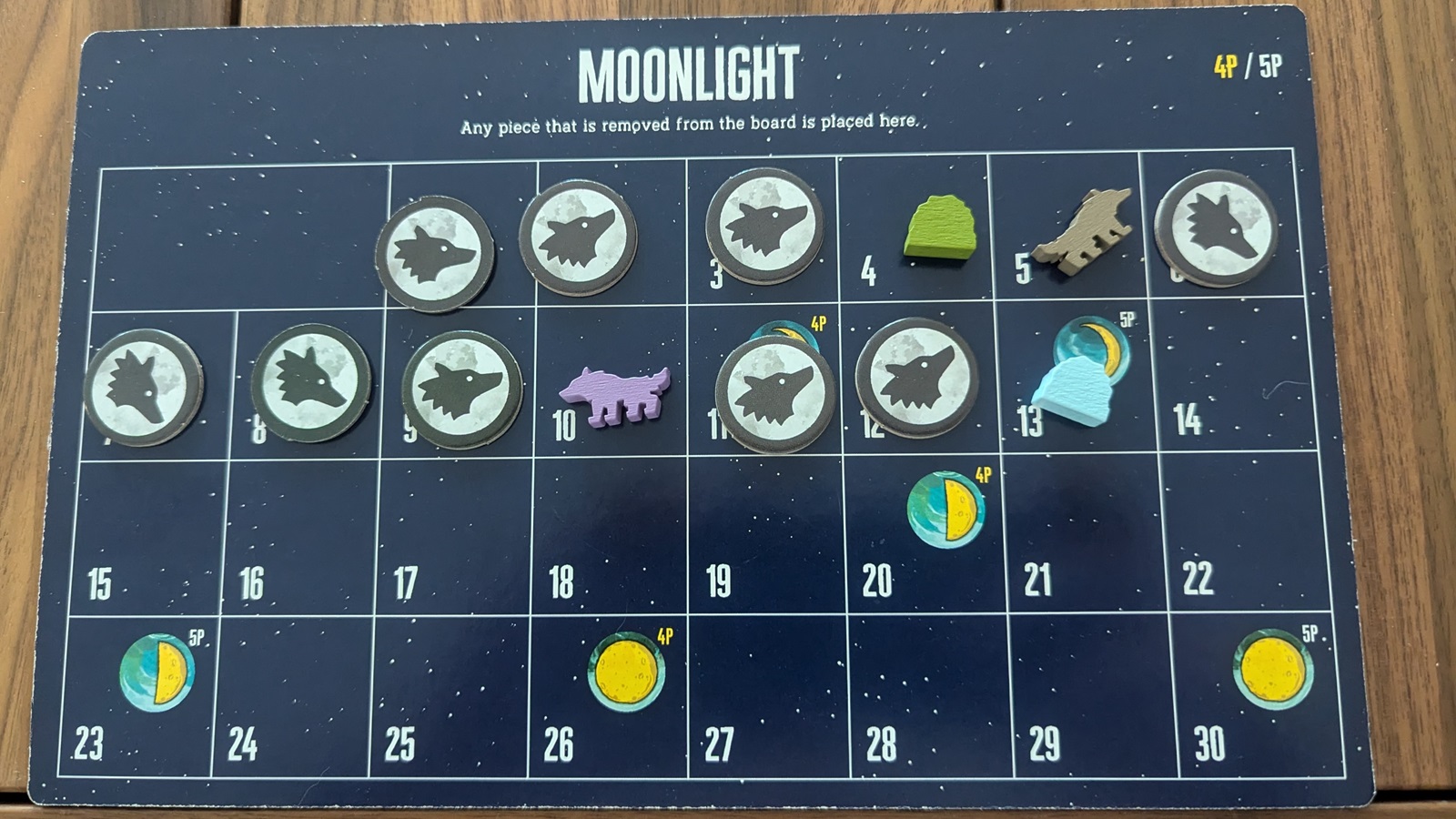
Tokens taken off the board triggering the crescent scoring phase.
Cons
In contrast to my previous statement about The Wolves being a fairly simple game, if you didn’t understand my rules explanation, I understand. I struggled to put the game together in my head until I was several turns deep into the game. The tile flipping isn’t the most intuitive system, but this struggle could be unique to me. I’m a visual person and I found myself having a hard time planning turns since I couldn’t quite visualize where my tiles would end up. I would have to flip my tiles to see what I could then do and then reset them to where they were. This made chaining actions together a bit of a pain.
There’s also just a host of small graphic design issues that hurt the game. Players ended up confused as to what a “water source” space was. These are the spaces that are under the moon tokens and have a big watering hole. Most of the board has rivers running through its terrain and it seems logical those spaces would be a water source. They are not and this is weird.
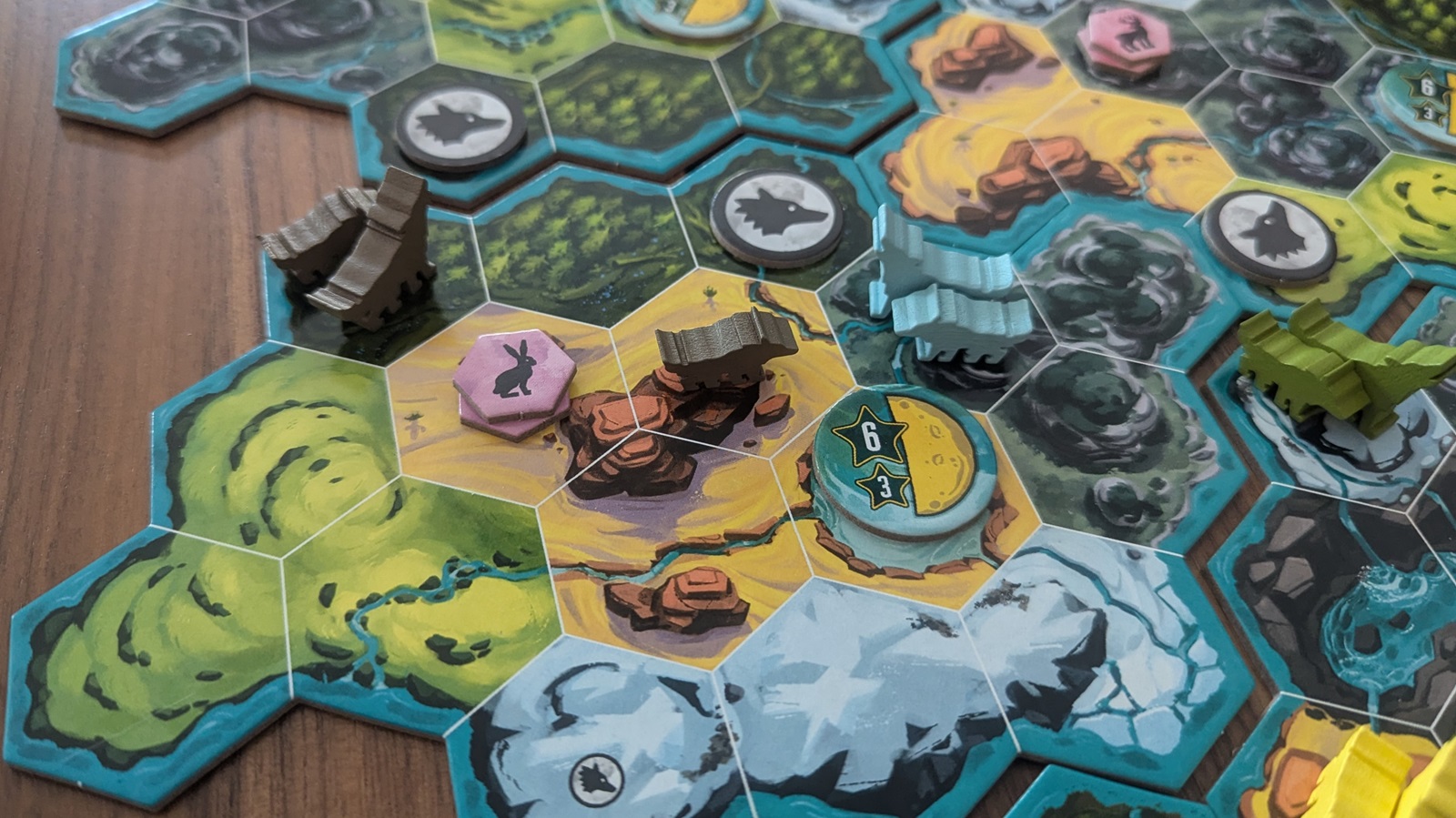
The desert wolves are preparing to hunt, but suddenly the tundra wolves lure a pack wolf away!
Setup is also a little bit of a chore as the exact board layout is determined by your player count. It would have been nice if the diagram of how to set up your interlocking boards was a little larger. Overall, if the map boards were a little larger overall it would have made it easier to see the icons on the board. The game has reminder tokens so you know which areas are being scored this phase, but they’re tiny and get lost in the visual clutter of the main board. The player boards being dual layered would have also been nice.
From a gameplay standpoint, the bonus action tokens seem very powerful and nothing in the game prevents you from hoarding them. This can mean games could end very suddenly without players being prepared. Since you immediately go to scoring when the end game is triggered, players can have the feel bads. A part of me wonders if the game would have benefited from a “finishing out the round” rule instead, but that’s not how it is. Maybe it is this way to try to prevent the hoarding of the extra action tokens. If that is the case, my experience was that everyone tended to hold onto the extra action tokens.
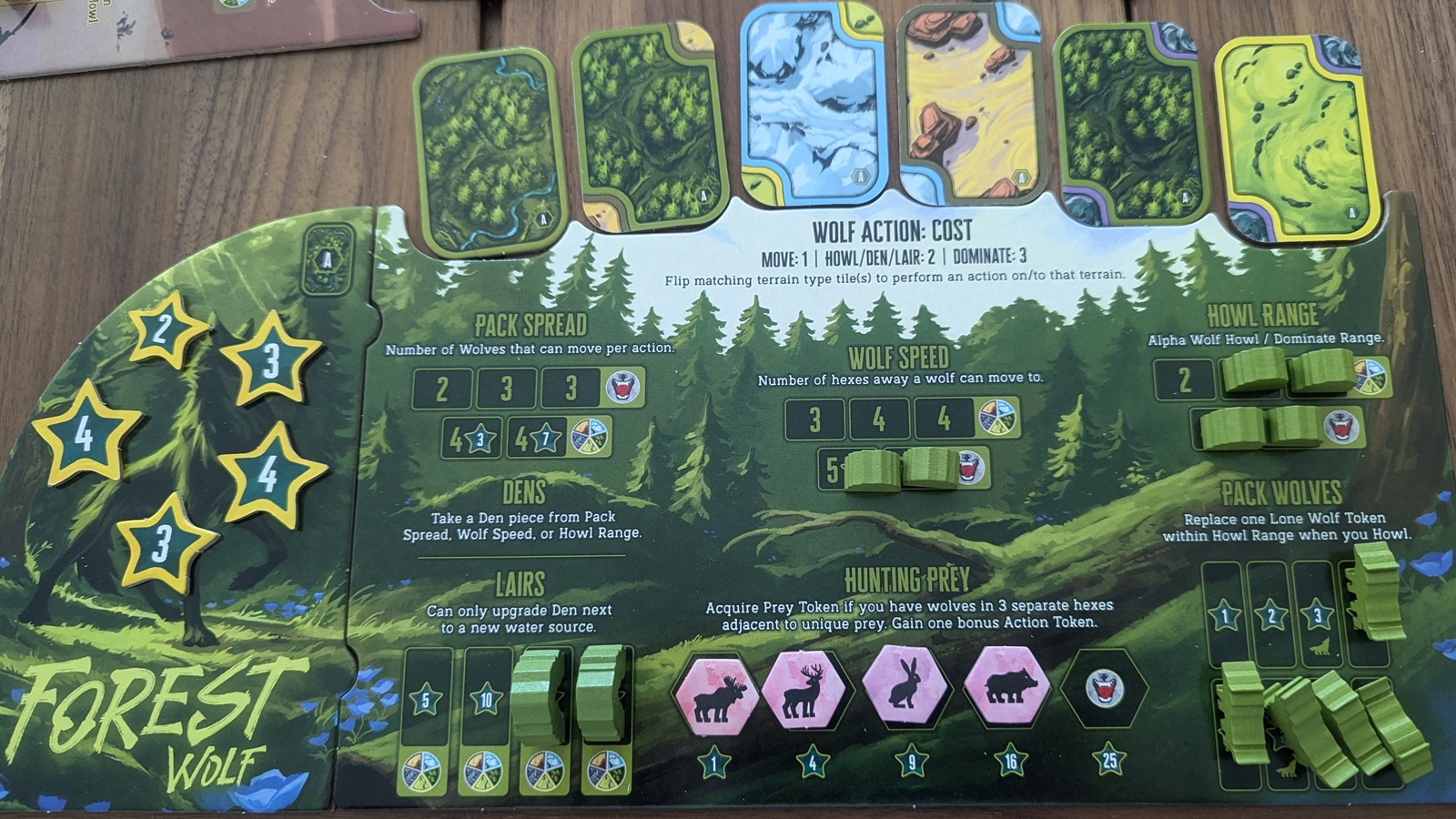
An example of end game scoring with the forest wolves.
While this did not come up in any of the games I played, I didn’t see anything in the game that would prevent one player from being “picked on” by the other players. If you’re in the worst position in this game you’re less likely to be able to retaliate and thus it would incentivize you to continue to dominate wolves/dens from that player. It would have been nice to receive a pity token when someone steals one of your pieces.
Last I should mention that in my copy there is a misprint on the player aid about whether or not you can move your wolves through a water source tile. You cannot, but this added to the confusion with the movement rules.
Chris began tabletop gaming in college and quickly fell into the addictive world of cardboard. Beginning with D&D and Catan he became an enthusiast of all things gaming; analog or digital. Chris, now a relapsed MtG player, loves connecting with people via gaming through RPGs, board games, and video games. A particular favorite is testing friendships through social deduction games.

The Wolves is a fun and interesting game. I haven’t come across anything that uses its unique tile flipping system before. The core of the game is straightforward, but the idea of flipping your target terrain tile(s) to take an action isn’t the most intuitive game mechanic I’ve come across. Despite some small graphic design issues, the puzzle that is managing your wolf pack against other players is difficult in a fun way. Each game is part optimization puzzle and social puzzle as the varying wolf packs adopt different strategies. If any of this has piqued your curiosity, I would recommend hunting out a copy of The Wolves.
PROS
- Unique tile flipping action system
- Good artwork throughout
- Wolf meeples
CONS
- Graphic design is confusing in small ways
- Setup is a little tricky
- Game can end suddenly
See below for our list of partners and affiliates:
